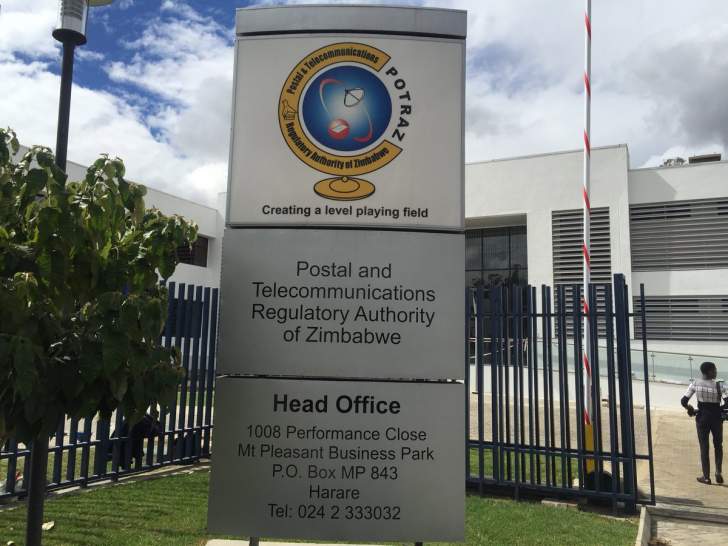The Postal and Telecommunications Regulatory Authority of Zimbabwe (POTRAZ) advised its stakeholders that following the ban on all public gatherings and the social distance measures being broadly implemented owing to the COVID-19 pandemic, the traditional Director General’s Annual and Quarterly Sector Performance Press Conferences could not be held until further notice. Accordingly, the Authority presented the key trends observed in the year 2019 as follows:
The marginal decline in annual penetration rates
The year 2019 registered marginal declines in penetration rates across all subscription-based markets. The fixed teledensity declined by 0.1% to record 1.8% in 2019 from 1.9% recorded in 2018. The mobile penetration rate declined by 2.5% to reach 90.6% in 2019 from 93.1% recorded in 2018 whilst the internet penetration rate declined by 2.3% to reach 60.6% in 2019 from 62.9% recorded in 2018. The decline in the penetration rates is largely attributable to the significant reduction in competitive promotional offerings by operators, forcing subscribers to cut down on the use of multiple SIM cards as well as dwindling disposable incomes.
Growth in national voice traffic vis-à-vis decline in international voice traffic
The total voice traffic increased by 15.2% to record 6.15 billion minutes from 5.34 billion minutes recorded in 2018. The growth in voice traffic is attributable to the growth in mobile on-net traffic because of the promotions that offered bonus minutes for calls within the same network.
International incoming traffic declined by 4.4% to record 170.7 million from 178.4 million minutes recorded in 2018. International outgoing traffic also declined by 34.3% to record 62.4 million minutes from 95.1 million minutes recorded in 2018. The decline in international traffic is largely attributable to the substitution effect of alternative calling procedures presented mainly by Over-The-Top services (OTTs) amidst low disposable incomes.
Growth in internet and data usage
The mobile internet and data usage grew by 31% to record 35,733 Terabytes in 2019 from 27,278 Terabytes recorded in 2018. This is a significant decline from a growth rate of 77.6% recorded in 2018. Used incoming international bandwidth capacity by Internet Access Providers (IAP’s) increased by 38.1% to record 116,927 Megabytes per second (Mbps) from 84,683Mbps recorded in 2018.
A decline in postal and courier volumes
The sector’s total postal and courier volumes declined by 32% to record 5.3 billion items in 2019 from 7.8 billion items recorded in 2018. The postal and courier volumes have been consistently declining over the past five years and this decline in postal and courier volumes, in particular domestic, is attributable to e-substitution.
Growth in network coverage
In total, 105 new base stations were deployed in 2019 comprising of 33 new 2G base stations, 40 new 3G base stations, and 32 new LTE ones, bringing the total number of base stations in the country to 8,911 from 8,806 recorded in 2018. The base station deployments resulted in improvement of the population coverage where the 2G network population coverage grew from 92.3% recorded in 2018 to reach 93.4% in 2019; 3G population coverage reached 83.9% in 2019 from 82.3% recorded in 2018 and the LTE population coverage also improved from 34.8% in 2018 to reach 35% in 2019.
Growth in sector revenues vis-à-vis rising operating costs
The year under review was characterised by a trend of growing revenues and rising operating costs due to the inflationary environment. The quarter-on-quarter growth in revenues averaged 87.2% against quarter-on-quarter growth in operating costs of 90.6%. The annual sector revenue for 2019 was ZWL$ 4.5 billion compared to US$1.6 billion in 2018. Operating costs for the sector in 2019 amounted to ZWL$ 3.3 billion compared to US$ 974.4 million recorded in 2018.
INDUSTRY OUTLOOK
The performance of the sector in 2020 will be dependent on the general socio-economic environment. Data and Internet services will continue to drive industry growth. However, demand levels for fixed broadband at household level may fall due to rising prices. The use of Over-the-Top services, such as WhatsApp, Skype, and Viber, is expected to grow as consumers cut back on communication expenditure due to dwindling disposable incomes.
In the face of depressed demand, a shift in operators’ business models around the Internet of Things (IoT) is inevitable, as is the trend the world over. Meanwhile, foreign currency challenges and the credit crunch continue to slow down network deployment, upgrades, and maintenance.
At the same time, incessant power cuts continue to disrupt networks availability, forcing operators to resort to alternative power sources such as diesel and solar power, thereby increasing their operating costs. The high cost of International Internet Connectivity remains a challenge, as Zimbabwe is a landlocked country, mainly accessing bandwidth from undersea cables via Mozambique and South Africa.
